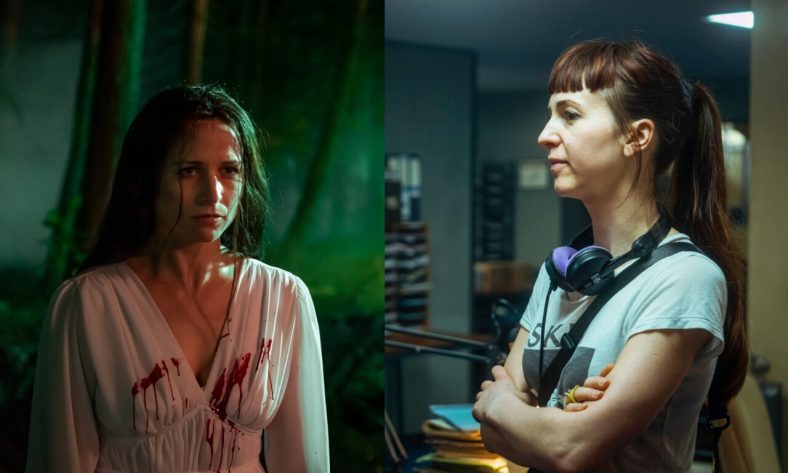What ‘Censor’ Director Prano Bailey-Bond Learned From David Lynch

Prano Bailey-Bond’s audacious feature debut, Censor, has one scene that encapsulates its essence with just a couple of lines.
In the scene, Enid Baines (Niamh Algar)—who works as a censor for the British Board of Film Classification during the “video nasty” era of the ’80s—wanders onto a horror film set, and is mistaken for one of the actors. With the camera rolling, the director, Frederick North (Adrian Schiller) tells her, “If you’re gonna do this, I will need you to access your darkest impulses.” Enid replies: “I don’t have any.”
Also Read: Censor — Cursed Projections and Moral Panic In Horror
Bailey-Bond calls this moment her “eye of the duck scene.” That term, coined by David Lynch, was crucial in helping her craft Enid’s descent into madness.
“I remember Lynch describing that: When you’re drawing a duck, it needs to have an eye, otherwise it’s abstract and it’s not a duck,” Bailey-Bond tells Dread Central. “And that’s the scene that pulls everything else together.”
Enid’s obsession with censoring or banning horror fare is so extreme that she tries her hardest, when answering Frederick, to deny that human nature could even have a dark side. The scene allows Bailey-Bond to express her own personal worldview while exploring Enid’s repressed psyche.
“That scene is the eye of the duck scene in Censor because it has a lot of my thoughts in it as well,” she explains. “What Frederick North is saying, about horror existing in the world and art [being] a reflection of that, rather than something that is pummeling darkness into the world… It’s not like humans were these angelic creatures before horror films existed. We’ve been a violent species prior to [horror] film. So, Enid’s reaction in that moment is really important. This is about somebody who’s so ashamed of their shadow self—of the bad parts of themself—that they’re not even going to acknowledge that they exist.”
Elsewhere in our interview, Bailey-Bond talks about making her movie in a mess of mud and torrential rainfall, and how the films of Lucio Fulci influenced Censor‘s look and feel. She also shares some of her favorite video nasties, which include one manic midnight movie and one seriously overlooked “mini-masterpiece.”
Watch the full interview below:
Censor is now available on DVD and On-Demand, courtesy of Magnolia Pictures. Featured image photographs by Maria Lax.
Categorized:News

